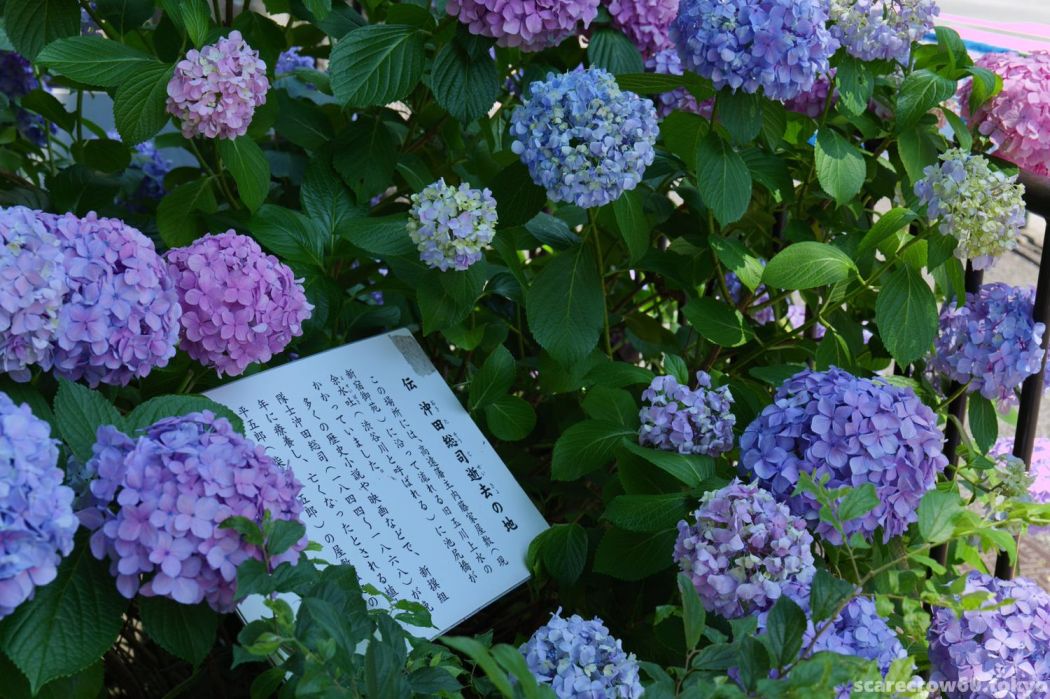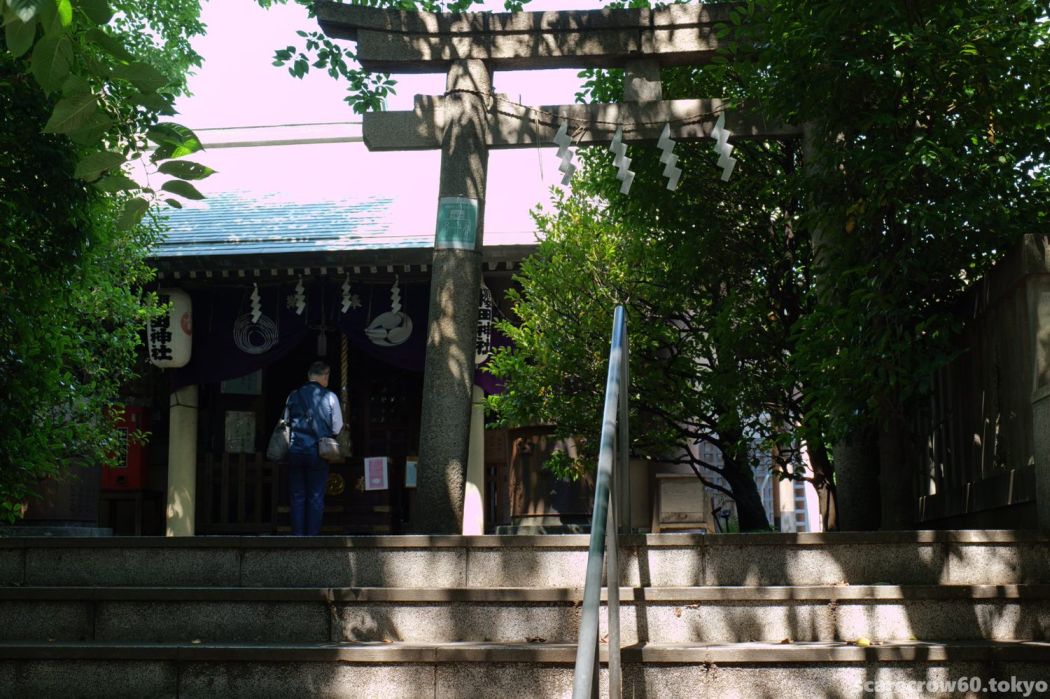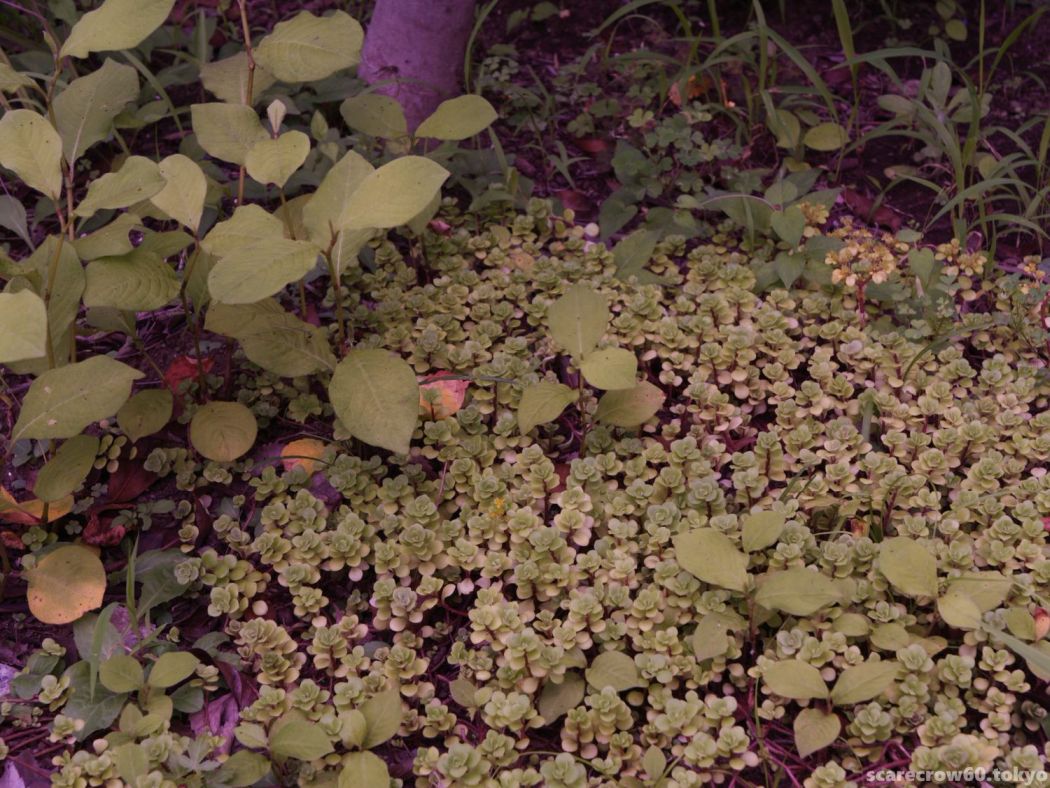This is a continuation from the previous article. I have just moved from Azabu-juban subway station to National Stadium station, and am now heading north on Gaien Nishi Dori Avenue, which is a multi-level intersection from in front of the Tokyo Metropolitan Gymnasium. The equipment in my hand continues to be the LUMIX S5 and the 20-60 zoom.
I have passed by this area many times by car, but never on foot. I was surprised to find a store selling kerosene and “charcoal” in such a place all of a sudden. It was closed on that day, and I am not sure if the store is still in business. If it is an active dealer, I wonder how there is a demand for charcoal.
A little further on, I found this sign. I have lived in Tokyo for quite a long time, but this is the first time I have seen something like this.
Illegal use of loudspeakers in the vicinity of diplomatic missions is punishable by law. -Ministry of Foreign Affairs-
I was a bit curious, so I did some research when I got home and found no “foreign diplomatic mission” in the vicinity of this location, which is strange. Is there something of some country hidden in this neighborhood, or is it actually something else in the name of “foreign diplomatic mission”…I guess it’s better not to pry too much.
Let’s change the subject. ↑As indicated by the intersection name sign attached to the traffic light at the top of the photo, Gaien Nishi Dori borders Shinjuku Imperial garden. The grove of trees on the left side of the photo is almost the southern edge of the garden, and if you check the map, it looks like it is just beyond the rows of plane trees and the rose garden in the park.
A little further on, you will see a proper gate, but it is closed and you cannot enter or leave from here. To enter, you need to turn around to the left and walk a few minutes to the Sendagaya Gate, and then pay the admission fee.
No, this is not the time for commentary on Imperial garden. I almost forgot what I came here for.
There is a place near the Daikyo-cho police box intersection on Gaien Nishi Dori where Soji Okita, the first team leader of the Shinsengumi, is said to have passed away.
There it is, here it is.
The Shogunate forces, including the Shinsengumi, were defeated in the Battle of Toba-Fushimi, and Okita Soji, along with Kondo Isami and others, fled to Edo. His health condition was not good, and he was not able to return to the front lines. It is said that he was sheltered under the protection of Matsumoto Yoshijun, a doctor retained by the shogunate, at a gardener’s house near Ikejiribashi Bridge here in Sendagaya.
There are various theories as to whether or not this is the place of his death, and a plaque placed by Shinjuku City says “Den(It is said to be)” but it was heartwarming to see the beautiful hydrangea beds created by kind-hearted people and the beautiful flowers blooming just in time for Soji’s memorial.
Soji died of illness (1868) two months after the death of Isami Kondo, whom he adored. It is said that he was not informed of Kondo’s death. He was said to have been 24 or 25 years old. We can’t help but hope that the young man who ran through the turbulent end of the Tokugawa Shogunate’s blood-soaked reign met his final days in this quiet place, at least in peace.
After visiting Soji’s birthplace, cemetery, and the place of his death in the morning, I was in an uncharacteristically quiet state of mind, and my final destination of the day was the place where Soji Okita must have nurtured his youth during his most vigorous years.
I turned back to the subway station and took the train again.
Get off at Ushigome Yanagicho Station on the Oedo Line and go above ground to the Ichigaya Yanagicho intersection. Slopes descend from both east and west, and the topography of this area of Shinjuku-ku, Tokyo, seems to be surprisingly undulating.
Just after turning the corner in front of Yanagimachi Hospital in the left foreground of the photo, we found a small torii gate and an Inari shrine at the end of a secluded alley. This is our destination.
Here was the Shieikan Dojo of Ten-nen Rishin genres, where Isami Kondo served as the head of the school at the end of the Edo period. ↓You can see the monument on the right side of the photo.
In the past, Kondo, Okita, Hijikata, and many other young men spent their Samurai training days here with passionate aspirations. Today, however, there is nothing left at the small Inari shrine, which stands quietly in the middle of a residential area under the hot sun, that reminds us of the old days when the Shinsengumi, who would eventually shake Kyoto at the end of the Edo period, gathered there.
↓The alley on the far left in the photo is the entrance to the ruins of the Shieikan Dojo from the other side of the building. Surrounded by buildings and low-rise residences, you will have to be very passionate in your search to miss this corner, no matter which way you turn.
After visiting Roppongi, Sendagaya, and Ichigaya Yanagicho and walking in the footsteps of Soji Okita in half a day, I realized once again how far away Edo and Meiji periods are, and how difficult it is to find traces of those days today. On the other hand, it is also a deep feeling when we find something that is in sync with our feelings of today.
In my case, I was deeply moved when I saw the monument to “place of death” surrounded by hydrangeas in full bloom, showing the innocent goodwill of people who cared about a young warrior in history, almost 150 years apart. It is quite precious.
In terms of photography, the heat made it difficult to concentrate on shooting, and I only took scattered snapshots, but the Soji memorial made for an interesting weekend history walk in its own way.



